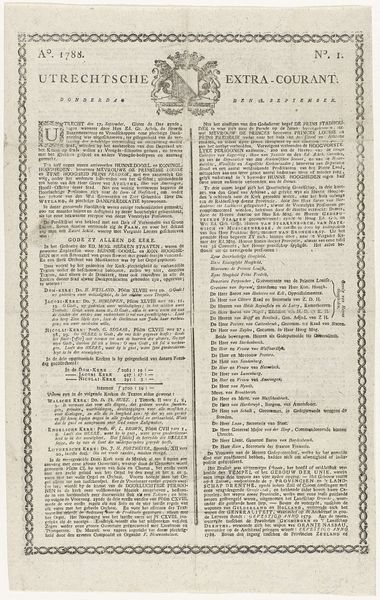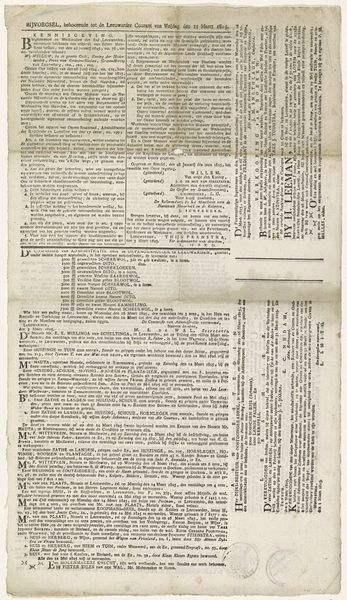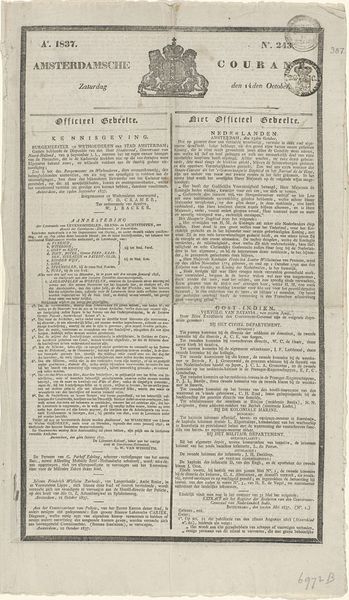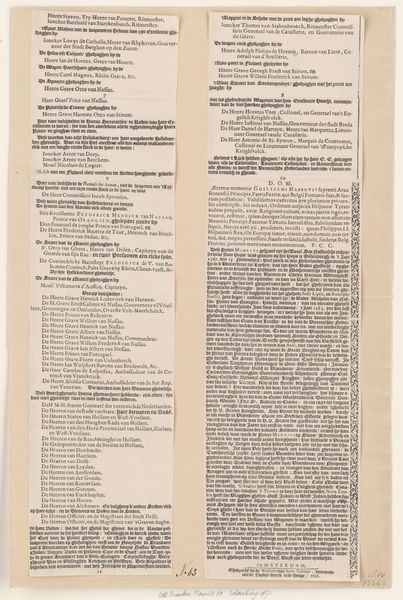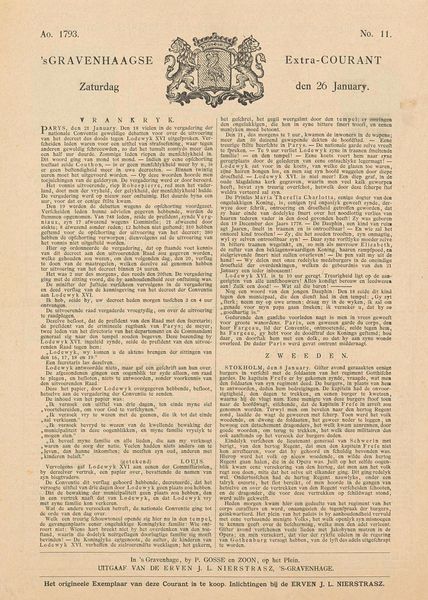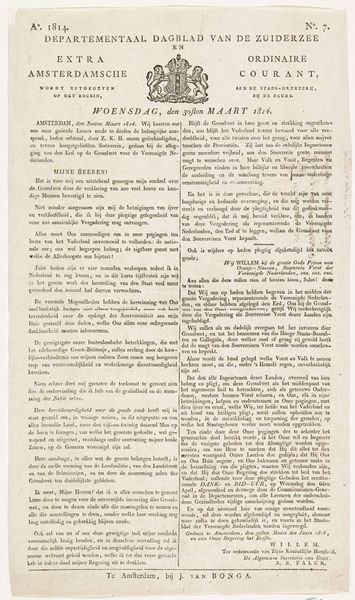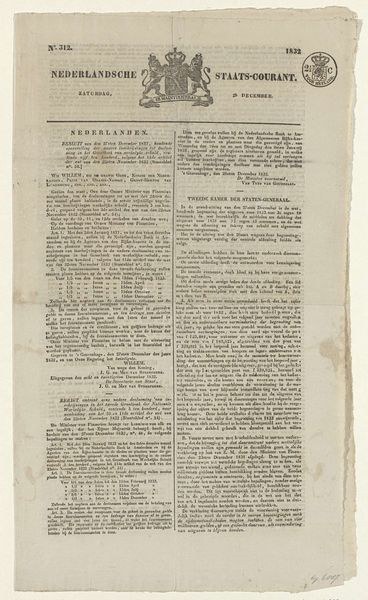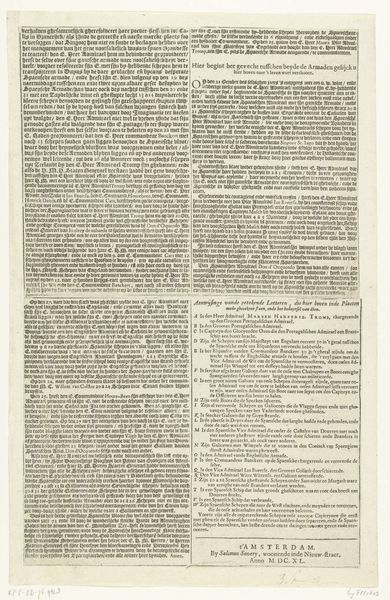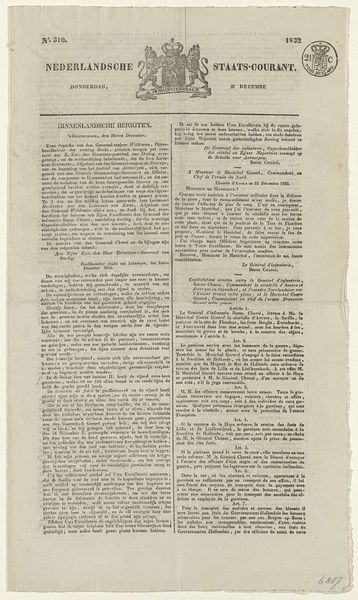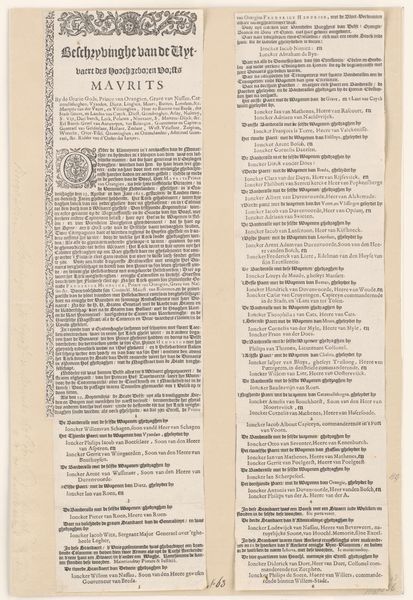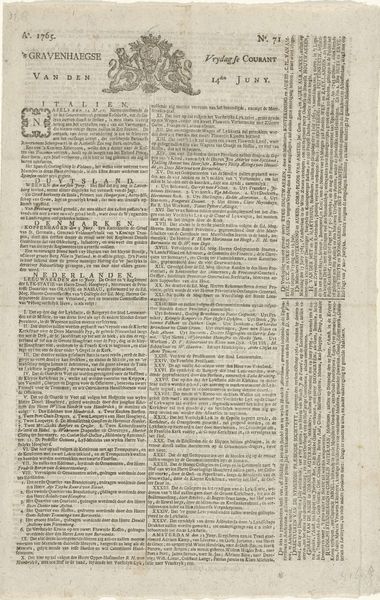
graphic-art, print, typography, poster, engraving
#
graphic-art
#
dutch-golden-age
# print
#
typography
#
poster
#
engraving
Dimensions: height 355 mm, width 245 mm
Copyright: Rijks Museum: Open Domain
Curator: What strikes me immediately about this broadside is its density; a tightly packed block of text framed by ornate typography. It seems incredibly important yet visually imposing. Editor: Absolutely. This is "Dagblad van 's Gravenhage, 13 Augustus 1828," possibly from that year. Created by P.E. van Staden, housed in the Rijksmuseum, it’s a fascinating example of graphic art. Think of it as a very early form of mass communication. Curator: Mass communication indeed. I imagine it pinned up in public places, sparking conversations and shaping opinions. It looks like the Dutch Golden Age but used for almost modern purposes? Editor: Not quite the Dutch Golden Age in terms of style – that era had ended, but the techniques of engraving and printmaking were still central. What’s interesting is the typography itself. This is more than just conveying information, it's an assertion of authority. The bold header, the formal script announcing the royal family – these choices communicate power structures. Curator: Exactly. And consider what’s absent, whose voices *aren't* included? The formal, almost legalistic tone positions the information as objective truth, silencing dissenting opinions, wouldn’t you say? The power lies in deciding what news gets printed, what narratives become amplified and which get erased from public discourse. Editor: I agree completely. Studying newspapers like this allows us insight to the socio-political context through careful imagery analysis. The museum as a forum for societal awareness helps engage discussion of modern challenges in terms of censorship, bias, and access. Curator: Understanding the deliberate structuring of information through language and design reminds us to examine current forms of news through a more critical eye, too. Thanks to analyzing the newspaper and historical considerations, my insight has broadened with our dialogue! Editor: And I am more acutely aware that even mundane, or what seem mundane, everyday print offers a complex nexus of art and societal discourse.
Comments
No comments
Be the first to comment and join the conversation on the ultimate creative platform.
